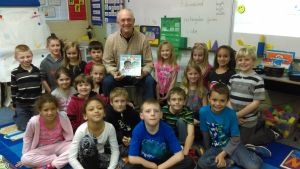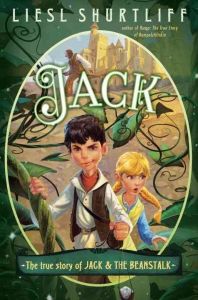By Nikki Moses
How was Read Aloud today, Mr. Biola?
“Swell.” The energy in his voice is unmistakable. He has just returned from reading to three classrooms of devoted kids at North School in Elkins. “Swell.”
Biola, a retired insurance executive, wanted to read aloud to children but did not have an avenue. Then he found out about Read Aloud West Virginia. That was four years ago. Today the veteran volunteer reads to six classrooms each week, half on Tuesdays and half on Fridays. Students range from pre-kindergarten to fourth grade.
“Today I had ‘guest pickers,’’’ he said. Hmmm? “My grandson picked Bony Legs by Joanna Cole. It’s a little scary so the kids liked it. My wife picked Beautiful Joe by Margaret Marshall Saunders.” This “pick” is a story written in 1893 about a dog that has had a tough start in life. “It is still resonant today,” Biola explained.
He frequents Elkins’ public library and the Davis and Elkins College library in search of titles, and he keeps a log of books that work well.
Roald Dahl is a favorite, including his The Enormous Crocodile. “It’s about a crocodile that likes to eat children,” he said, laughing. He also reads The Fantastic Mr. Fox and The BFG to his fourth graders. How to Be Cool in the Third Grade by Betsy Duffey is another favorite.
He has read from the Harry Potter series, too. These lengthy novels are too long for Biola to read in their entirety. He reads a few chapters and then lets the kids’ appetite for reading take over. “If they want (to finish reading) it, they know where to find it,” he said.
An original title is Big Butch the Blue Nosed Reindeer. This is a story Biola created for his children. His daughter, Dr. Holly Biola, turned it into picture book. Another amazing story is Willa the Caterpilla, a story written by her father-in-law, the late Dr. Don Roberts. Roberts wrote Willa during his time as a doctor serving in World War II and sent it back to his daughters.
Second grade teacher Brittany Scarberry sings Biola’s praises. “He comes faithfully every week, right on time…He reads with wonderful expression, and even does voice impressions for different characters.
“Mr. Biola brings so much joy and knowledge to the students through reading. A consistent example of an adult reading for enjoyment offers so many benefits to the students,” she said.
Asked about his reading style, Biola said, laughing, “I have a falsetto and a bass. And I can do Donald Duck. There are not many times to use that one, but I am ready.”
He advises readers to vet their books carefully, and “Keep your appointment,” he counsels.
In the end Biola believes he is the one who benefits the most from Read Aloud. “I have a great gig,” he said.
Nikki Moses is the former editor of the Read Aloud newsletter and a board member.







 I read this to a group of 2nd-5th graders for the Read Aloud organization. It was a fun adventure tale, but couched within it are great lessons for kids regarding worth, value, and the nature of money.
I read this to a group of 2nd-5th graders for the Read Aloud organization. It was a fun adventure tale, but couched within it are great lessons for kids regarding worth, value, and the nature of money.
